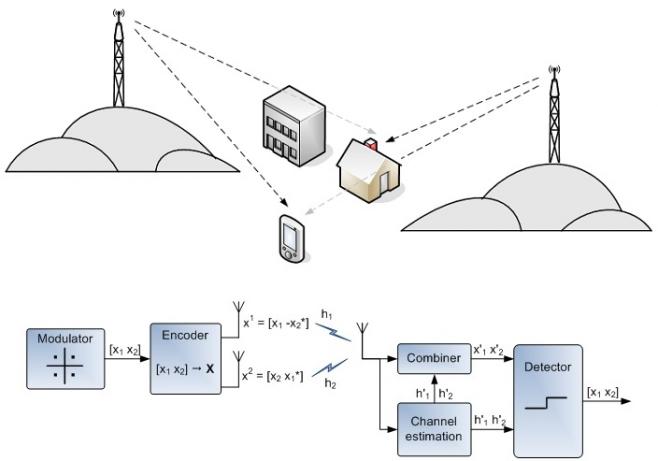

MISO SFN
MISO is a type of transmit diversity technique based on space-time coding to achieve higher resistance to signal fading. It is a special case of more general MIMO concept using two transmit antennas (or diversity channels) and one receive antenna. The concept is also known as Alamouti coding. Since it would be highly impractical and less efficient to install both transmit antennas at the same site (opposed to other wireless standards, e.g. 802.11n) the broadcasting sites are divided into two groups each representing one diversity channel of the MISO concept. Since this technique only operates if both channels/groups and transmitters within a single group transmit synchronous waveforms this technique is being implemented in SFN.

Since both antennas (or groups of antennas), each representing one diversity channel, transmit their signal from different locations the channel impairments impacting each diversity signal differ. It is statistically unlikely that the channel impairments would affect both channels at the same time in the same way. Knowing the state of each channel (i.e. channel state information) the receiver can combine both signals in such a way to favour the parts of the signal that are less degraded. As a consequence the combined signal experiences higher C/I opposed to a single channel despite the fact that transmit antennas can transmit only half of the required power in SISO.
For further information on network design principals, transmitter power optimization and how to exploit diversity benefits please contact us.
